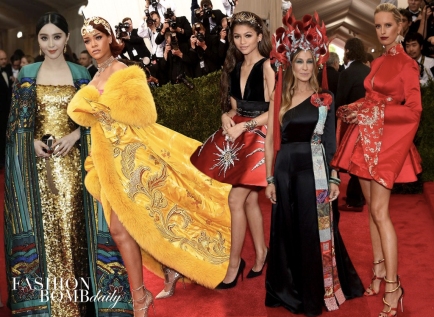Cultural appropriation is when a person takes a tradition from another culture and adapts it as their own. This includes religious symbols, artefacts, traditional knowledge as well as any other unapproved use of cultural practice or ideation. When it comes to wearing clothes based on other cultures, people often think they are dressing “unique” and “different” and don’t really recognise the issue of being offensive. The dangers of cultural appropriation go beyond antagonising people, it continues patterns of disempowering groups that are already marginalised.
Cultural appropriation is an issue that is seen quite commonly portrayed among celebrities in a way in which is not respectful of the culture’s values and morals. An example of this is Katy Perry performance at the 2013 American Music awards that was “Geisha-inspired”, culturally appropriating and misaligning a part of Japanese entertainment typically performed in a much more socially aware context. Phyllis Heitjan stated that “Between the lack of Asian women on stage, the heavy-handed use of bowing and shuffling around in the choreography, and the ethno-confused set and costume design, Perry presented her viewers a one-dimensional Eastern fantasy drawn by a Western eye right out of the gate”. Basically, her performance borders on mocking a culture rather than truly understanding its origins.
Celebrities at the Met ball further displayed this notion. The theme of this event was, China: Through the looking Glass.The celebrities failed to portray this theme and did not represent it at all and led to their outfits becoming borderline offensive. The celebrities seemed to rely on specific stereotypes to represent an entire culture for example dragons, braids and chopsticks. According to Vogue, the night’s theme was meant to “primarily examine how eastward-looking Westerners have understood and misunderstood Chinese culture.” In which the outfits certainly exemplified western stereotypes of China and failed to honour and represent the culture.
The stereotypical Chinese themes were clearly adopted into the celebrities outfits, they didn’t even bother seeking designers from the country the theme was based on, with Rihanna being the only celebrity to wear a dress made by a Chinese designer, which shows that the celebrities primary focus was how they looked instead of portraying the theme correctly. Ahead of the event fashionista noted “When it comes to cultural appropriation and accidental racism, the fashion industry doesn’t have the best track record”. Which is extremely true, when you consider things like the usage of cornrows, Native American headdresses, or traditional geisha wear, the Western region of this global industry has not upheld the best reputation into what is and what is not okay to wear.

Cultural appropriation belittles a culture’s history, significance and future. By customising another group’s traditions or way of life to fit another’s, the value of the culture decreases. It is a prevalent issue that continues to rise in Hollywood and become more evident from prominent figures. It is a issue that needs to stop as it leads to misrepresentation and racism. A way for this issue to be prevented is for ‘appropriation’ to be replaced with ‘appreciation’ and show an understanding of the culture and become more aware of respectful ways to appropriate traditional and symbolic aspects of cultures different to their own.
References:
http://www.theallstate.org/2015/08/27/cultural-appropriation/
http://www.huffingtonpost.com/kadia-blagrove-/cultural-appropriation-it_b_7800126.html?ir=Australia

